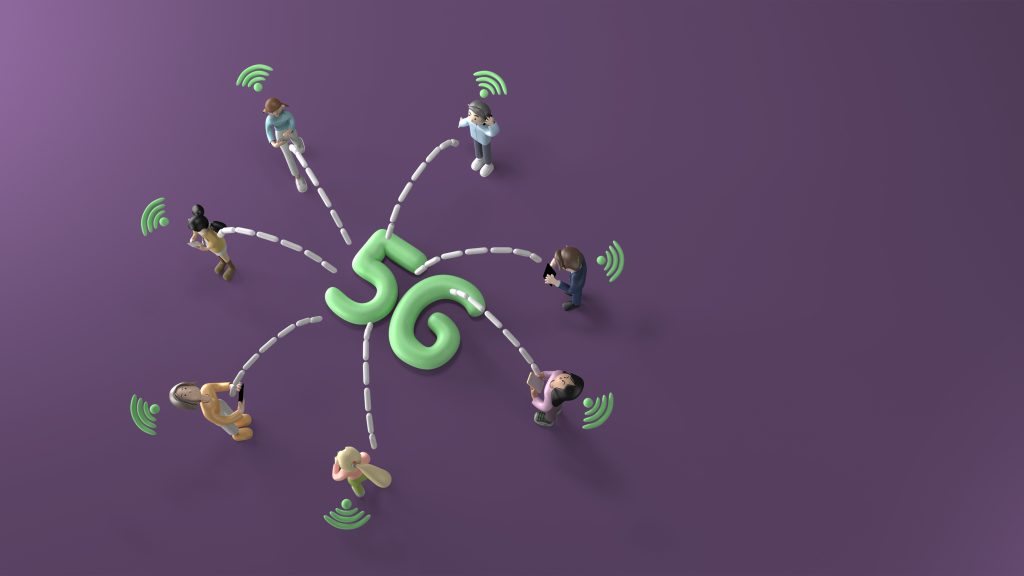Well, brace yourself as we step into the realm of 5G, where a plethora of concerns and challenges await. From the risks of network security breaches to the hefty price tag of infrastructure development, and even the potential health effects, the list seems endless. But that’s not all. There are also worries about interference with flight operations, battery drain on our beloved cellular devices, and the risk of further widening the digital divide. As we embark on this exploration of the issues with 5G technology, brace yourself for a journey filled with complexities and obstacles that need to be untangled and overcome.
Network Security Concerns
Network security concerns surrounding 5G technology are significantly amplified due to the sheer volume of connected devices and the sensitivity of the data being transmitted. As 5G enables a massive increase in the number of connected devices, it also introduces new cybersecurity risks. The decentralized nature of 5G networks opens up new points of vulnerability, making it essential for telecom operators and device manufacturers to invest in robust security measures.
One of the concerns related to 5G network security is the potential for cyber attacks that can compromise data privacy and threaten critical infrastructure. With the increased reliance on interconnected devices, the risk of unauthorized access and data breaches becomes more significant. To mitigate these risks, stringent security protocols and encryption mechanisms must be implemented.
Furthermore, there have been discussions about potential health concerns related to 5G technology. However, health organizations such as the FDA and WHO state that the levels of radiofrequency radiation from 5G are within international guidelines and not expected to have adverse effects on human health. Continuous monitoring and research are necessary to address any potential health concerns.
Another issue that has been raised is the potential interference between 5G signals and aircraft radio altimeters. The frequency band used by 5G is close to that used by radio altimeters, leading to concerns about flight interference. While telecom operators and equipment manufacturers assert a low risk of interference, the FAA continues to monitor the situation and issue guidelines to ensure flight safety.
Cost of Infrastructure Development
As we shift our focus to the cost of infrastructure development, it is important to consider the financial implications of implementing 5G technology. The transition to 5G requires a complete overhaul of existing infrastructure, including the deployment of new antennas, base stations, and high-speed fiber connections. However, the substantial cost of infrastructure development may hinder the rollout of 5G in rural areas. Return on investment in remote areas may be lower, posing challenges for deployment. Infrastructure development is a significant barrier to the widespread adoption of 5G.
One of the key financial implications of 5G technology is the cost barriers associated with infrastructure development. The deployment of 5G in remote areas can be particularly challenging due to the higher costs involved. Building the necessary infrastructure in areas with lower population densities may not provide the same return on investment as in urban areas. This creates a financial dilemma for telecom operators and may result in limited 5G availability in rural and remote areas.
Furthermore, the cost of infrastructure development can limit the accessibility of 5G technology, exacerbating the digital divide. The high cost of deploying 5G infrastructure may restrict its availability to urban and affluent areas, leaving rural and low-income communities behind. This not only widens the digital divide but also hampers the potential benefits of 5G for these underserved areas.
Limited Availability of Ecosystem
The limited availability of a diverse ecosystem poses challenges for the widespread adoption of 5G technology. A robust and diverse ecosystem is essential for the full potential of 5G to be realized. Currently, the development of 5G-enabled devices and applications is ongoing, and it may take time for a wide range of 5G-compatible devices and applications to become available in the market. This limited availability hampers the market demand for 5G technology.
Technological advancements play a crucial role in the development of a diverse ecosystem. The continuous improvement and innovation in technology are necessary to create a wide range of 5G-enabled devices and applications that can meet the demands of various industries and consumers. However, this requires significant investment and research and development efforts.
Regulatory challenges and compatibility issues also contribute to the limited availability of a diverse ecosystem. Regulatory frameworks need to be established to ensure the smooth deployment and operation of 5G networks. Additionally, compatibility issues between different devices and applications must be addressed to foster interoperability and seamless connectivity.
Industry collaboration is vital in overcoming the challenges posed by the limited availability of the ecosystem. Collaboration between telecommunications companies, device manufacturers, and application developers is necessary to accelerate the development and availability of a diverse range of 5G-enabled devices and applications. This collaborative effort can help meet market demands and drive the widespread adoption of 5G technology.
Skills and Education Gap
The next aspect to examine is the significant challenge posed by the skills and education gap in the implementation of 5G technology. This gap refers to the lack of expertise and knowledge needed to effectively deploy and manage 5G networks. Here are three key points to consider:
- Investment in education and skills training: To bridge the skills gap, it is essential to invest in education and training programs that focus on telecommunications, cloud computing, cybersecurity, AI, and IoT. By providing individuals with the necessary knowledge and skills, they can contribute to the successful implementation of 5G technology.
- Bridging the gap through expertise development: Overcoming the challenges presented by the skills and education gap requires a concerted effort to develop expertise in 5G technology. This can be achieved through partnerships between educational institutions, industry professionals, and government agencies. By fostering collaboration and knowledge sharing, the gap can be bridged more effectively.
- Overcoming challenges for successful deployment: The skills and education gap poses a significant challenge for the widespread deployment of 5G. However, by investing in education, skills training, and expertise development, these challenges can be overcome. It is crucial for stakeholders to recognize the importance of addressing this gap to ensure the successful implementation of 5G technology.
Potential Health Effects
One important aspect to consider when examining the potential health effects of 5G technology is the ongoing debate surrounding the impact of higher frequency radio waves used by 5G on human health. The Federal Drug Administration (FDA), World Health Organization (WHO), and other health organizations state that 5G radiation levels are within international guidelines and are not expected to have health effects. Continuous monitoring and research are necessary to address any potential health concerns. In order to provide a clearer understanding, the following table presents the arguments for and against the potential health effects of 5G technology:
| Arguments For | Arguments Against |
|---|---|
| 5G radiation levels are within international guidelines | Continuous monitoring and research needed |
| Levels of radiofrequency radiation from 5G are not expected to have health effects | Expert consensus supports the safety of 5G technology |
| No conclusive evidence linking 5G to adverse health effects | Existing studies suggest no significant risk |
| 5G technology has the potential to revolutionize various aspects of life | Potential health effects should be monitored and addressed |
It is important to note that while the majority of scientific studies suggest that 5G technology is safe, ongoing research and monitoring are necessary to ensure the continued safety of this technology within established guidelines.
Potential Interference With Flight Operations
Potential interference with flight operations is a concern that has been raised regarding the deployment of 5G technology. The frequency band used by 5G is close to that used by radio altimeters, which has led to concerns about the risk of interference. In fact, there have been instances where flight suspensions were implemented in some airports during the initial stages of 5G deployment. This interference risk has prompted the Federal Aviation Administration (FAA) to closely monitor the situation and issue guidelines to ensure flight safety.
To address these concerns, telecom operators and equipment manufacturers have provided assurances that the risk of interference is low. They assert that measures have been taken to minimize any potential impact on flight operations. However, the issue of potential interference between 5G signals and radio altimeters is still being closely monitored and evaluated by regulatory bodies and aviation authorities.
In the meantime, it is important for the FAA to continue working with telecom operators to ensure that the deployment of 5G technology does not compromise the safety and reliability of flight operations. By adhering to established FAA guidelines and taking into consideration the concerns raised by aviation stakeholders, it is possible to mitigate any potential interference risks and ensure the uninterrupted operation of aircraft radio altimeters.
Battery Drain on Cellular Devices
Cellular devices equipped with 5G technology may experience faster battery drain due to the increased power consumption associated with the higher speeds offered by these networks. While 5G networks provide faster speeds and improved connectivity, this comes at the cost of higher power consumption. As a result, users may notice that their devices run out of battery more quickly when using 5G. Downloading or streaming large amounts of data can further drain the battery. To address this issue, device manufacturers are working on improving battery life for optimal 5G user experience. They are exploring battery technologies and power consumption management techniques to mitigate the impact of faster battery drainage. In the meantime, users can also optimize their device’s battery usage by adjusting settings and closing unnecessary apps in the background. By finding a balance between power consumption and user experience enhancement, device manufacturers aim to ensure that users can enjoy the benefits of 5G technology without compromising on battery life.
Risk of Exacerbating the Digital Divide
The impact of 5G technology extends beyond battery drain on cellular devices, as there is a significant risk of exacerbating the digital divide. While 5G has the potential to revolutionize various aspects of life, the high cost of infrastructure development may limit its availability to urban and affluent areas. This poses a threat to rural and low-income communities, potentially widening the divide between those who have access to high-speed internet and those who do not. To address this issue, collaboration between policymakers and telecom operators is necessary to ensure equal access to 5G technology for all communities. It is crucial to prioritize the needs of rural communities and low-income communities to prevent further marginalization. By working together, policymakers and telecom operators can develop strategies and initiatives that bridge the gap and provide equal opportunities for everyone. This collaboration is essential in preventing the digital divide from growing wider and ensuring that the benefits of 5G are accessible to all.



